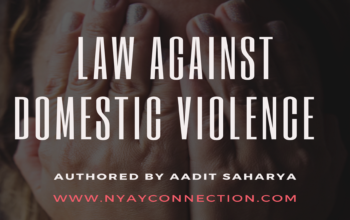The provision for cruelty as a ground of divorce under Section 13 of the Hindu Marriage Act is a crucial provision that recognizes the importance of protecting the well-being of individuals in a marriage. Cruelty can take many forms, including physical, mental, and emotional abuse, and it can have a severe and lasting impact on a person’s mental health, self-esteem, and overall well-being. This provision empowers individuals who have experienced cruelty in their marriages to seek legal redressal, thereby safeguarding their rights and interests. The courts have a crucial role to play in determining what constitutes cruelty and whether it is sufficient grounds for divorce. Overall, the provision for cruelty as a ground of divorce highlights the importance of upholding the sanctity of marriage while also recognizing the need for individual autonomy and protection from harm. The paper aims to convey the significance of this provision and how it serves as a safeguard against the perpetuation of cruelty in marriages.
INTRODUCTION:
Marriage is considered one of the most sacred and fundamental institutions in Hindu society, forming the basis of social and familial structure. However, in today’s society, marriages are not always the fairy-tale endings that we have read about in classic literature or watched in movies. It is not uncommon for couples to face difficulties and conflicts in their relationship that can lead to separation or divorce.
In India, the Hindu Marriage Act, of 1955 is the governing law for Hindu marriages, providing a legal framework for the institution of marriage, its dissolution, and matters relating to matrimonial property. The Act allows for divorce on various grounds, including cruelty, which is broadly defined under Section 13(1)(ia) of the Hindu Marriage Act. This ground of divorce has become increasingly prevalent in recent times and has attracted significant attention from the courts.
Cruelty is a complex and multi-faceted concept that encompasses a broad range of behaviors that can cause physical or mental harm to the spouse, making it a significant issue in matrimonial law. The interpretation of cruelty under the Hindu Marriage Act has evolved over the years, with courts taking into account various factors, including the cultural and social background of the parties.
This paper aims to explore the concept of cruelty under the Hindu Marriage Act and its interpretation by the courts. It seeks to examine the impact of cruelty as a ground of divorce and the various challenges and complexities that may arise in its application. By delving deeper into this topic, we hope to gain a better understanding of the nuances of cruelty as a ground of divorce and its relevance in modern-day society.
CONCEPT OF CRUELTY UNDER THE HINDU MARRIAGE ACT:
The concept of cruelty under the Hindu Marriage Act, of 1955 is a complex and multi-dimensional concept that has significant implications for the dissolution of marriages. Cruelty is not merely restricted to physical violence or abuse but also encompasses mental and emotional abuse that can have far-reaching consequences on the well-being of the spouse.
Section 13(1)(ia) of the Hindu Marriage Act defines cruelty as conduct that causes bodily or mental suffering to the extent that it becomes impossible for the spouse to live with the other. The conduct must be of such a nature that it exceeds the reasonable tolerance of the other spouse. This definition recognizes that cruelty is not just physical but also includes non-physical acts that cause mental or emotional suffering.
Physical cruelty includes acts like beating, torture, and physical assault, which are overtly visible and can have immediate and long-term physical effects on the spouse. On the other hand, mental cruelty includes acts that cause mental agony, such as constant taunts, abuse, and harassment. The courts have recognized that mental cruelty can be equally or more harmful than physical cruelty, as it can leave deep psychological scars that may take years to heal.
The interpretation of cruelty under the Hindu Marriage Act has evolved over time, with the courts taking into account various factors such as the cultural and social background of the parties, the degree of cruelty, the duration of the conduct, and its impact on the spouse. In recent times, the courts have taken a more expansive approach to the concept of cruelty, recognizing that it is not limited to specific acts but can also be inferred from a pattern of conduct or a series of events.
Understanding the concept of cruelty under the Hindu Marriage Act is essential for anyone dealing with marital disputes or seeking a divorce on grounds of cruelty. By delving deeper into this topic, we can gain a better understanding of the nuances of cruelty and its impact on the institution of marriage.
INTERPRETATION BY THE COURTS:
The interpretation of cruelty as a ground for divorce by the courts has evolved over time. The courts have taken a liberal approach while interpreting cruelty, as they recognize that every case of cruelty is unique and requires a thorough examination of the facts and circumstances.
The Supreme Court, in the case of V. Bhagat v. D. Bhagat (1994), held that cruelty can be both physical and mental. The court recognized that physical cruelty is easy to prove as it involves bodily harm or injury to the spouse. However, mental cruelty is harder to establish, as it involves conduct that causes mental agony or suffering to the spouse, which makes it impossible for him or her to live with the other. The court clarified that mental cruelty can take various forms, such as verbal abuse, false accusations, humiliation, and constant nagging.
The courts have held that cruelty can be established through direct evidence, as well as circumstantial evidence. Direct evidence refers to any evidence that directly proves the existence of cruelty. For example, if a spouse has physically assaulted the other, then medical reports or eyewitness accounts can be used as direct evidence. Circumstantial evidence, on the other hand, refers to any evidence that is not direct but can be inferred from the facts and circumstances of the case. For example, if a spouse has constantly belittled and humiliated the other in public, then the testimony of witnesses who have observed such behavior can be used as circumstantial evidence.
Moreover, the courts have held that a single act of cruelty is sufficient to establish the ground for divorce. In the case of Samar Ghosh v. Jaya Ghosh (2007), the Supreme Court held that the cumulative effect of small acts of cruelty can also be considered while determining cruelty as a ground for divorce. The court recognized that repeated acts of cruelty, even if they are not severe individually, can have a cumulative effect on the mental and emotional well-being of the spouse.
The interpretation of cruelty as a ground for divorce by the courts has been liberal and has enabled spouses to seek divorce on various grounds. The courts have recognized that cruelty can take various forms, and it can be established through direct and circumstantial evidence. The courts have also held that a single act of cruelty or the cumulative effect of small acts of cruelty can be a ground for divorce.
IMPACT OF CRUELTY AS A GROUND FOR DIVORCE:
In addition to providing an opportunity for the victim’s spouse to escape a harmful relationship, cruelty as a ground of divorce also has significant implications for the division of assets and financial support. In many cases, the victim’s spouse may be entitled to a larger share of the marital assets or spousal support payments. This is particularly true in cases where the cruelty has had a significant impact on the victim’s spouse’s ability to earn a living or maintain their standard of living.
The impact of cruelty on the victim’s spouse is not limited to financial considerations. Cruelty can have long-lasting psychological effects, including depression, anxiety, and post-traumatic stress disorder (PTSD). These effects can have a significant impact on the victim’s spouse’s ability to form new relationships and move on from the trauma of the abusive relationship.
The impact of cruelty is not limited to the victim’s spouse. Children who witness or experience cruelty in the home may also suffer long-term psychological effects, including anxiety, depression, and behavioral problems. These effects can have a significant impact on the children’s ability to form healthy relationships and succeed in life.
It is important to note that cruelty as a ground for divorce is not limited to physical abuse. Cruelty can take many forms, including emotional abuse, verbal abuse, and financial abuse. Emotional abuse can be just as harmful as physical abuse, and it can be much more difficult to prove in court. Verbal abuse, such as name-calling and belittling, can also have a significant impact on the victim’s spouse’s mental health.
Cruelty as a ground of divorce is an essential tool for protecting the rights of spouses in unhappy marriages. However, it is important to ensure that the evidence is carefully examined, and the conduct must be of such a nature that it makes it impossible for the spouse to live with the other. It is also important to recognize that the impact of cruelty is not limited to the victim’s spouse, and it can have long-lasting effects on children who witness or experience it.
THE BURDEN OF PROOF:
The burden of proving cruelty as a ground of divorce lies with the petitioner’s spouse. The petitioner must provide evidence that the accused spouse has acted cruelly and that the conduct has made it impossible for the petitioner to live with the accused spouse. The evidence can be direct, like medical reports or eyewitness accounts, or circumstantial, like phone call records or emails.
The courts have held that the burden of proof is higher in cases of mental cruelty than physical cruelty. The victim’s spouse must establish that the conduct was of such a nature that it caused mental agony and made it impossible for the victim’s spouse to live with the accused spouse.
DEFENCES AVAILABLE TO THE SPOUSE:
The spouse can raise several defenses against the ground of cruelty. These include denial of the conduct alleged, justification for the conduct, and condonation or connivance by the petitioner’s spouse.
If the spouse denies the conduct alleged, then the petitioner spouse must provide sufficient evidence to establish the ground of cruelty. If the spouse justifies the conduct, then the petitioner spouse must show that the conduct was of such a nature that it made it impossible for the petitioner spouse to live with the accused spouse. If the petitioner’s spouse has condoned or connived with the conduct, then the ground of cruelty may not be available to the petitioner’s spouse.
REMEDIES AVAILABLE TO THE VICTIM:
If the court finds that cruelty has been established as a ground of divorce, then the victim’s spouse is entitled to several remedies. These include a decree of divorce, maintenance, custody of children, and division of property.
The court may order the spouse to pay maintenance to the victim and children if they are unable to maintain themselves. The court may also grant custody of children to the victim’s spouse if it is in the best interests of the children. The court may also divide the property between the spouses in a fair and equitable manner.
CONCLUSION:
Cruelty as a ground of divorce under Section 13 of the Hindu Marriage Act is a vital provision that recognizes the importance of protecting the well-being of individuals in a marriage. Cruelty can take many forms, including physical, mental, and emotional abuse, and it can have a devastating impact on a person’s mental health, self-esteem, and overall quality of life. By providing legal recourse for victims of cruelty, the Hindu Marriage Act empowers individuals to take control of their lives and seek justice in cases where their dignity and safety have been violated. Overall, the provision for cruelty as a ground of divorce highlights the importance of upholding the sanctity of marriage while also recognizing the need for individual autonomy and protection from harm.
This article is written by Aadit Saharya. Aadit is a law student at Symbiosis Law School. For feedback relating to this article, he may be emailed at aaditsaharya.legal@gmail.com.
If you are also a law student or a legal professional and wish to contribute to the website, you may email your submission at nyayconnection@gmail.com.




